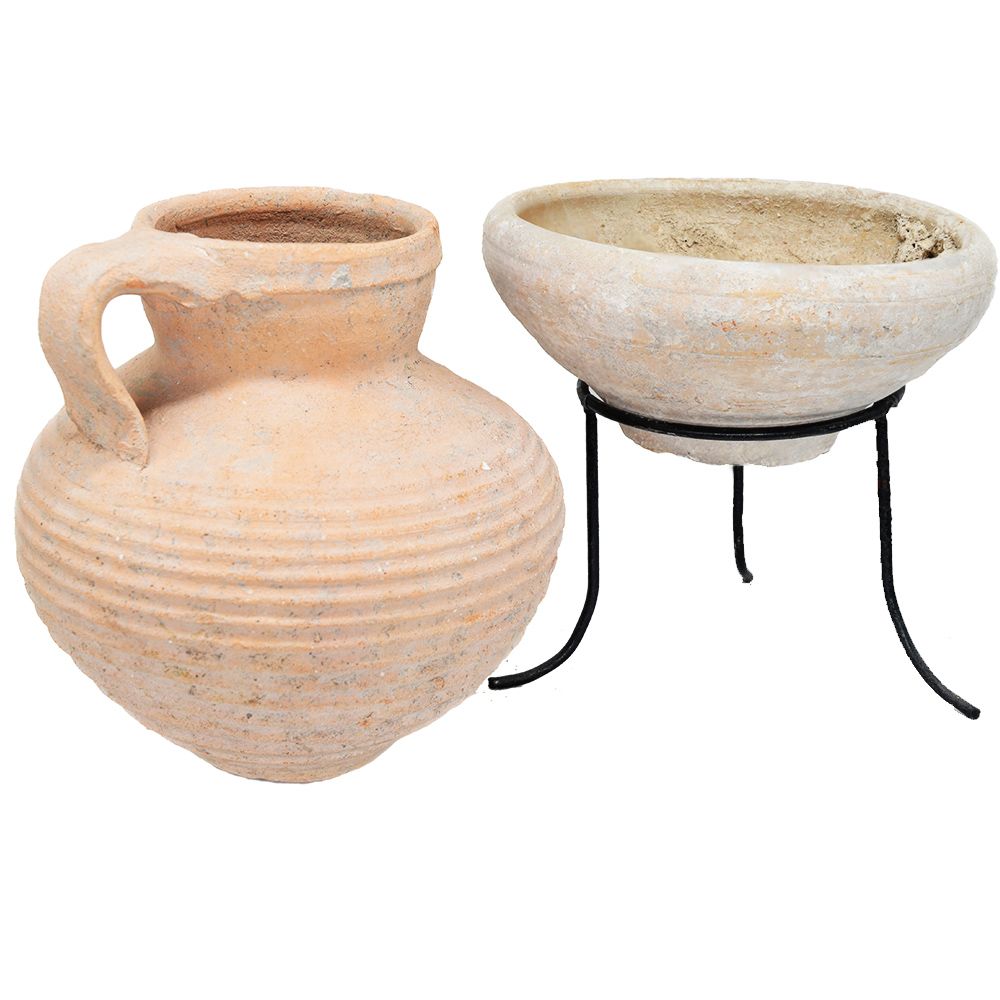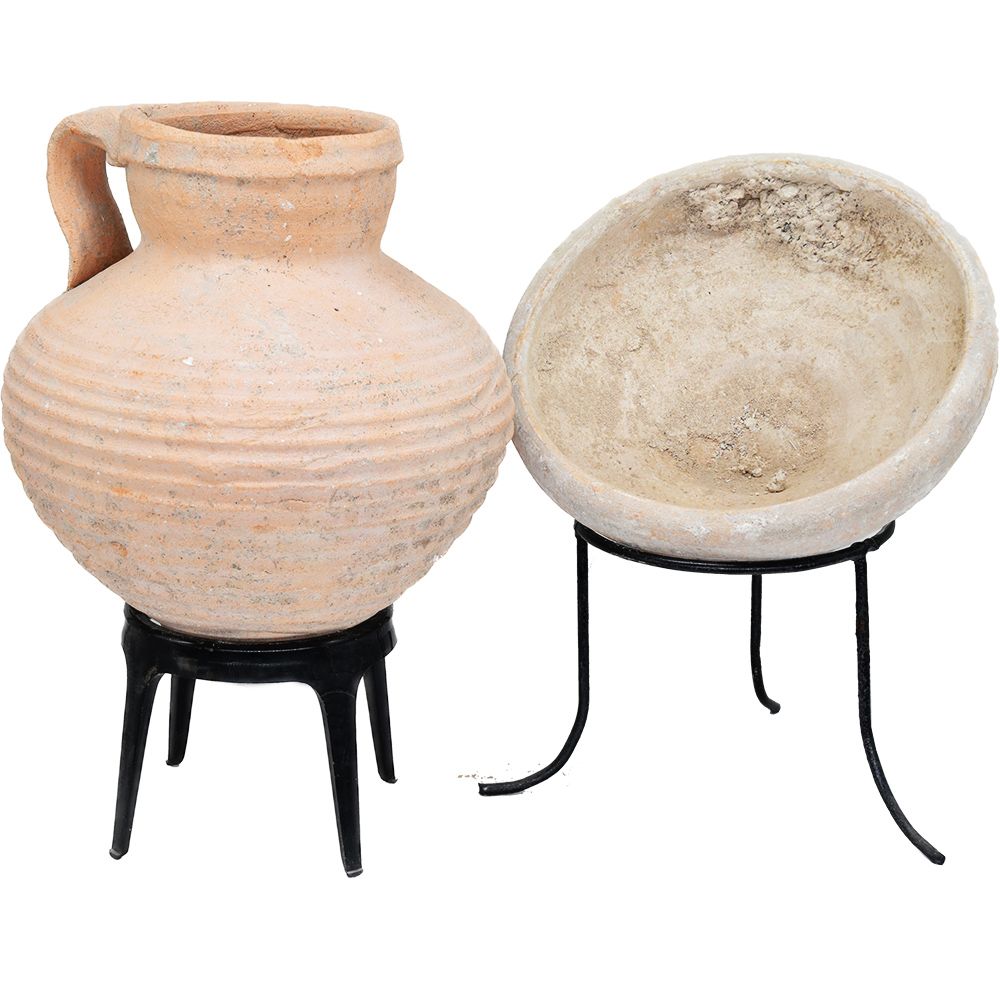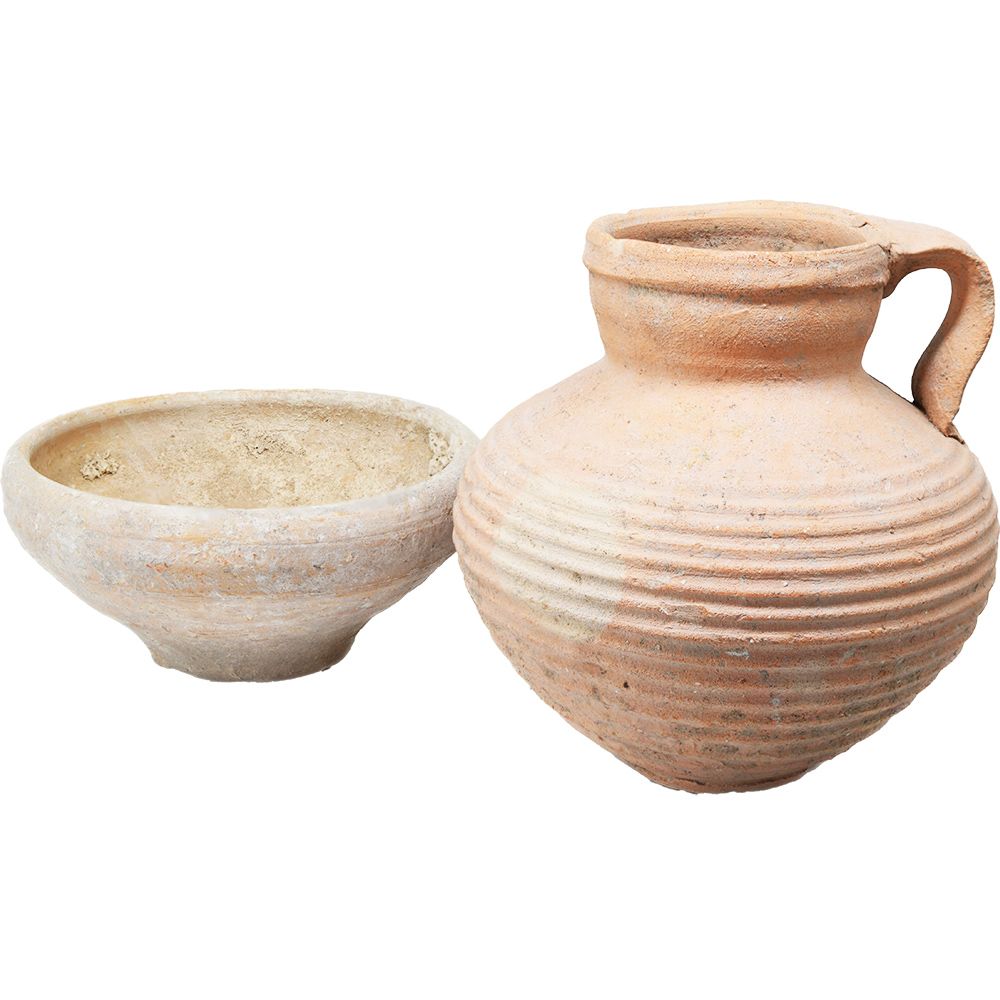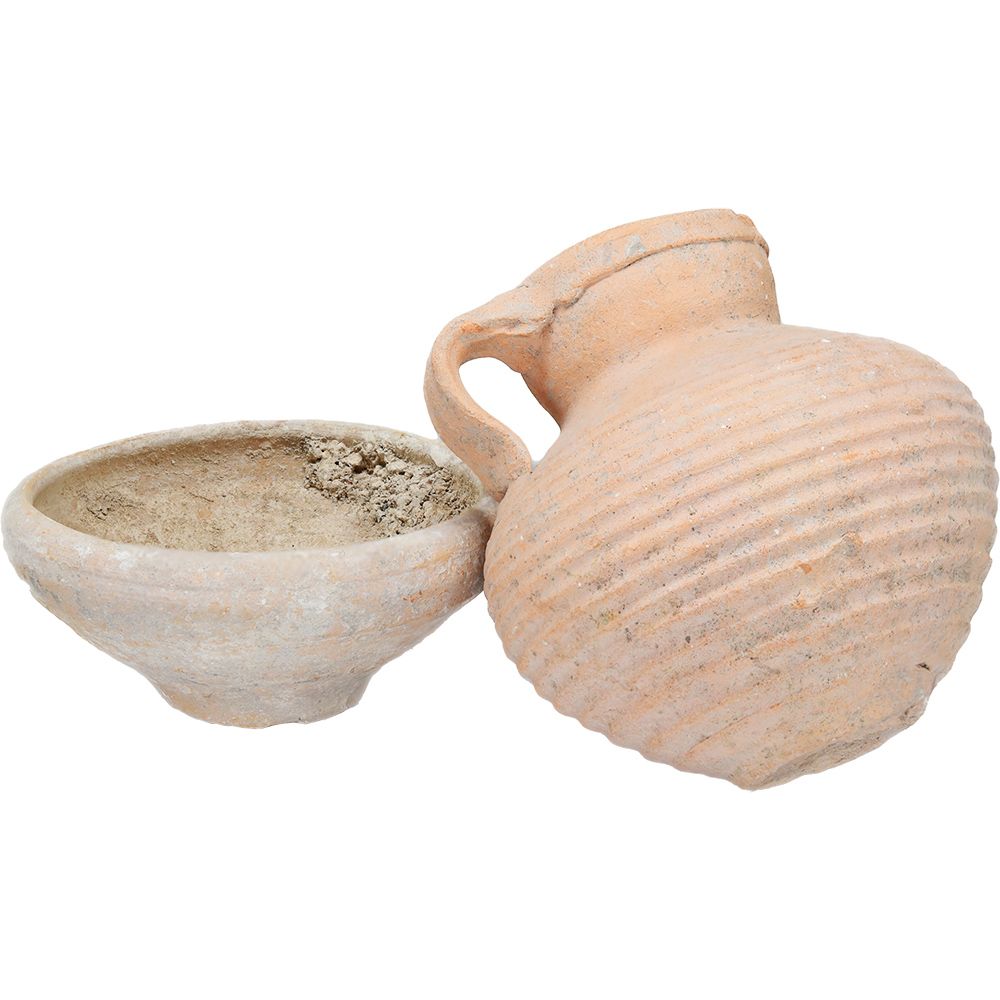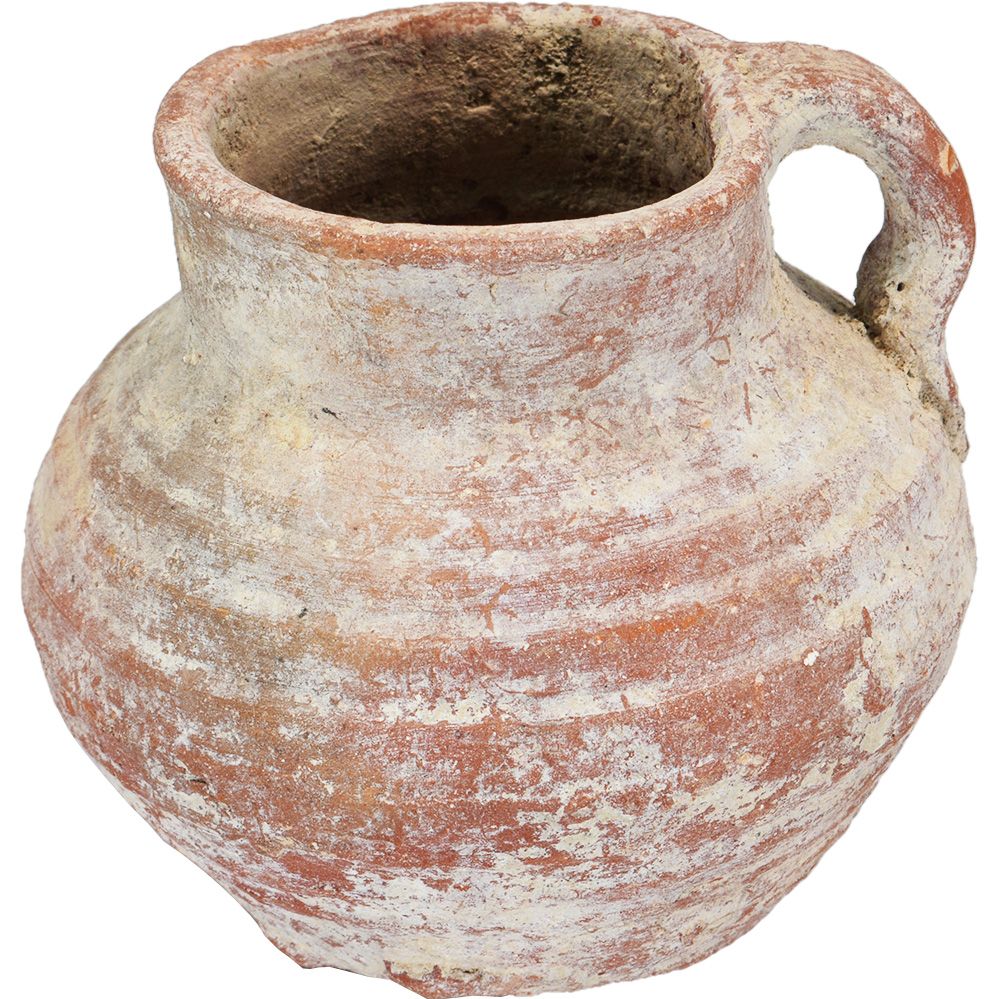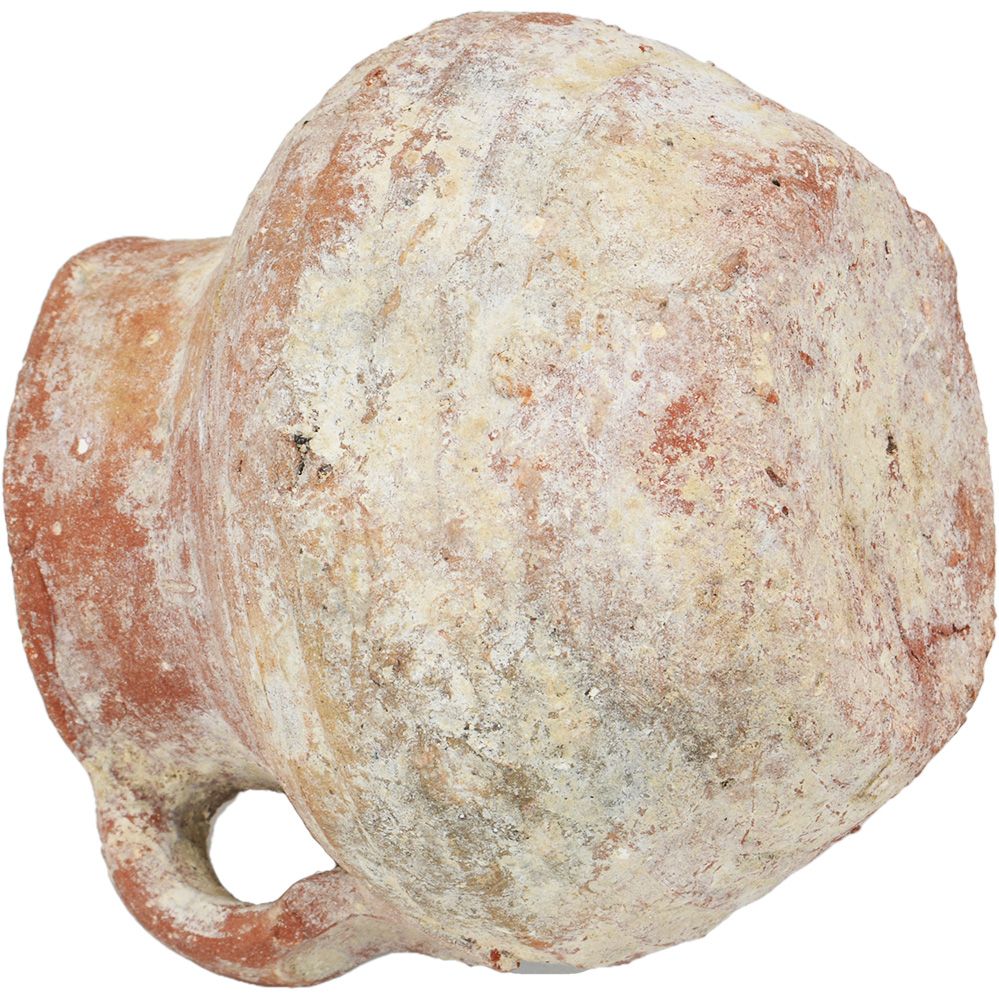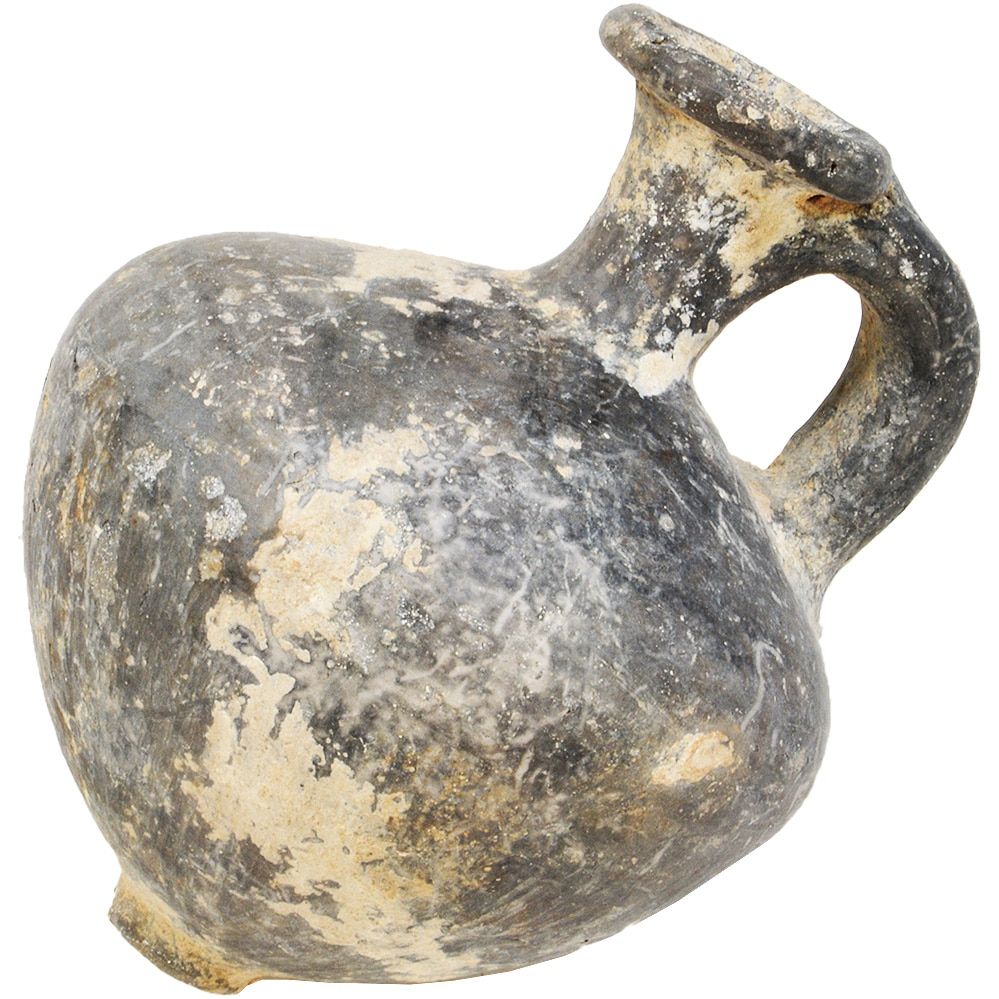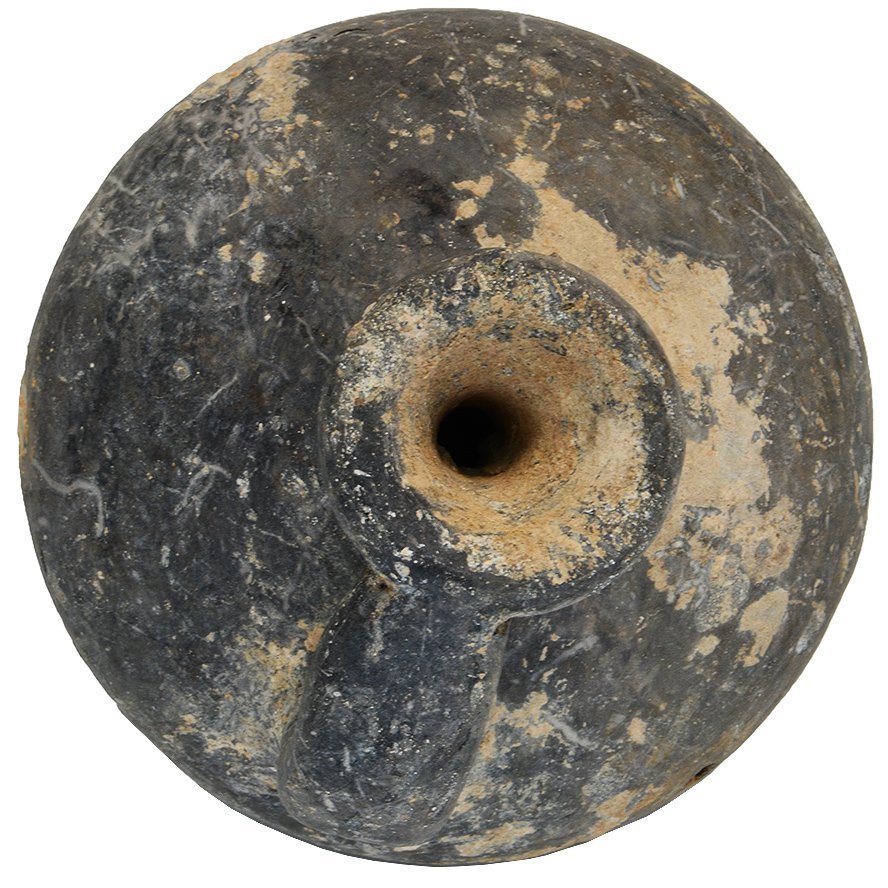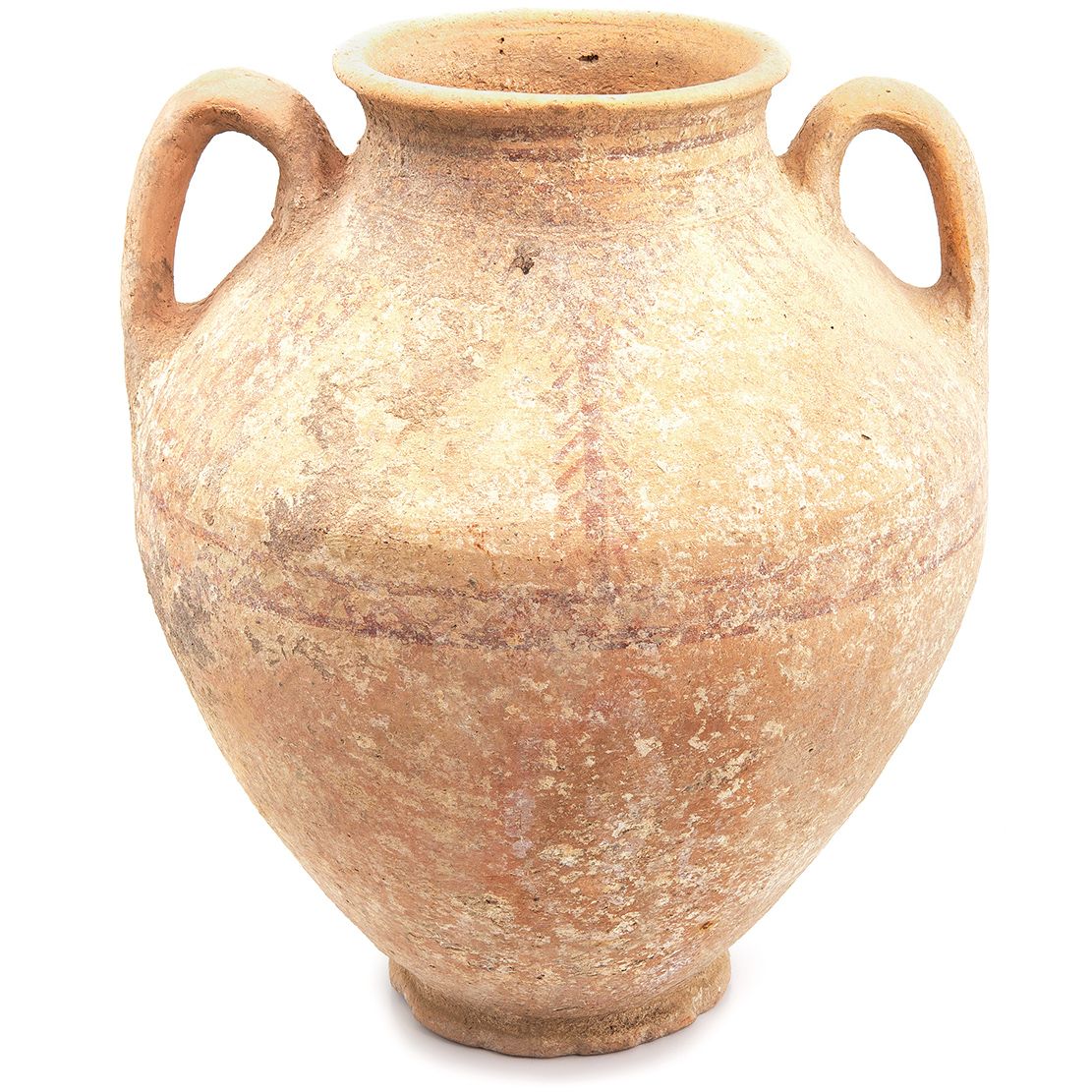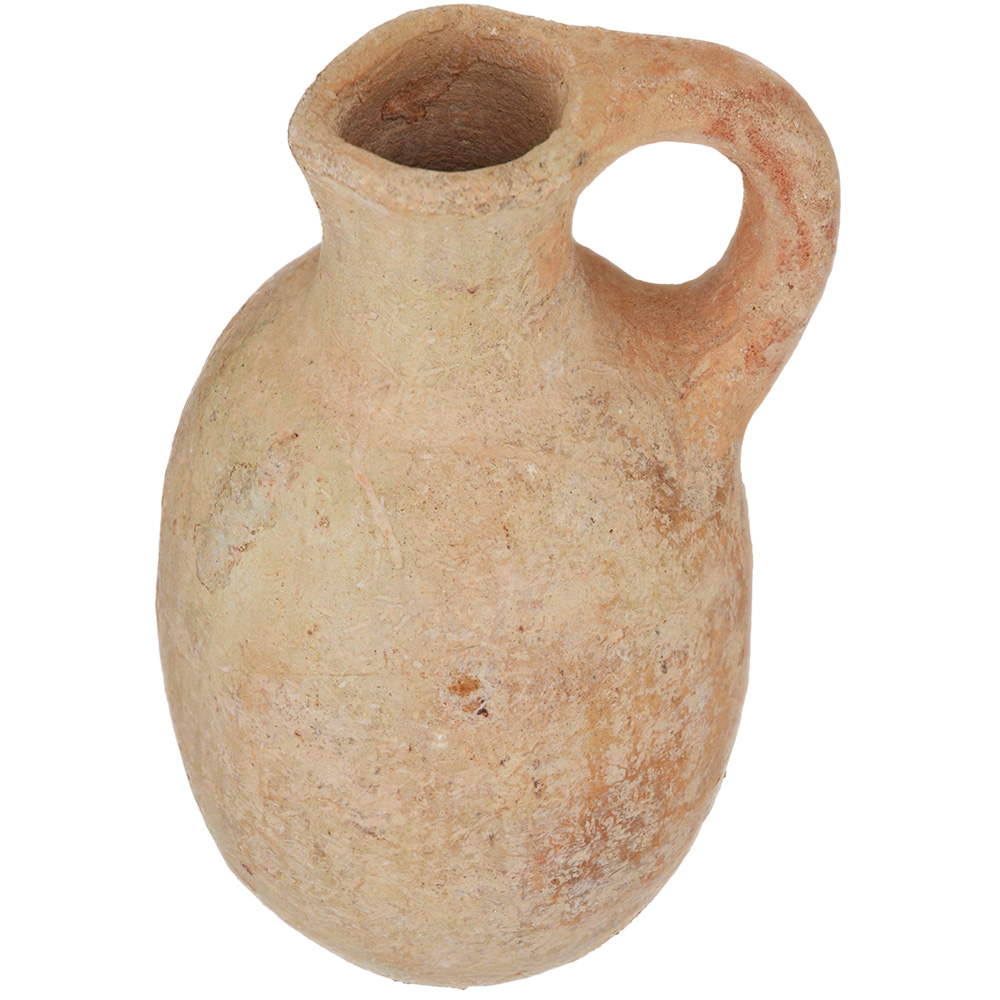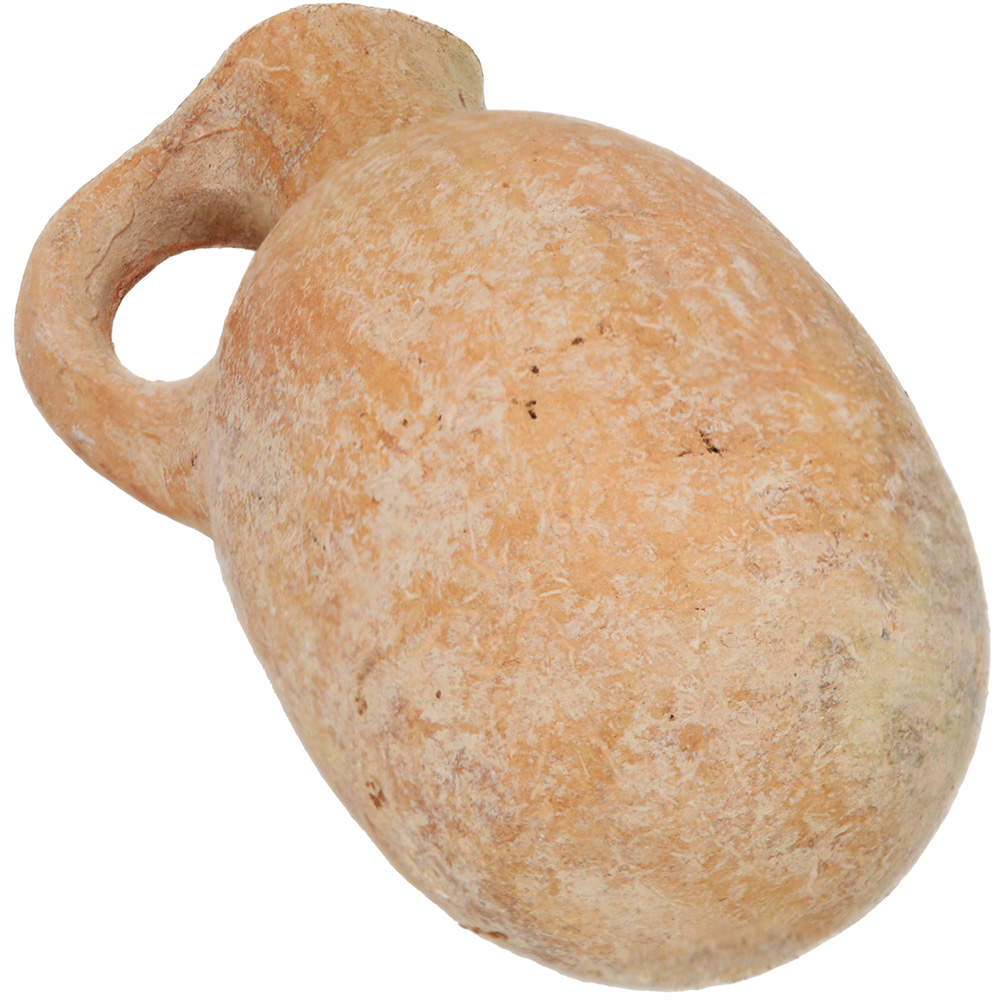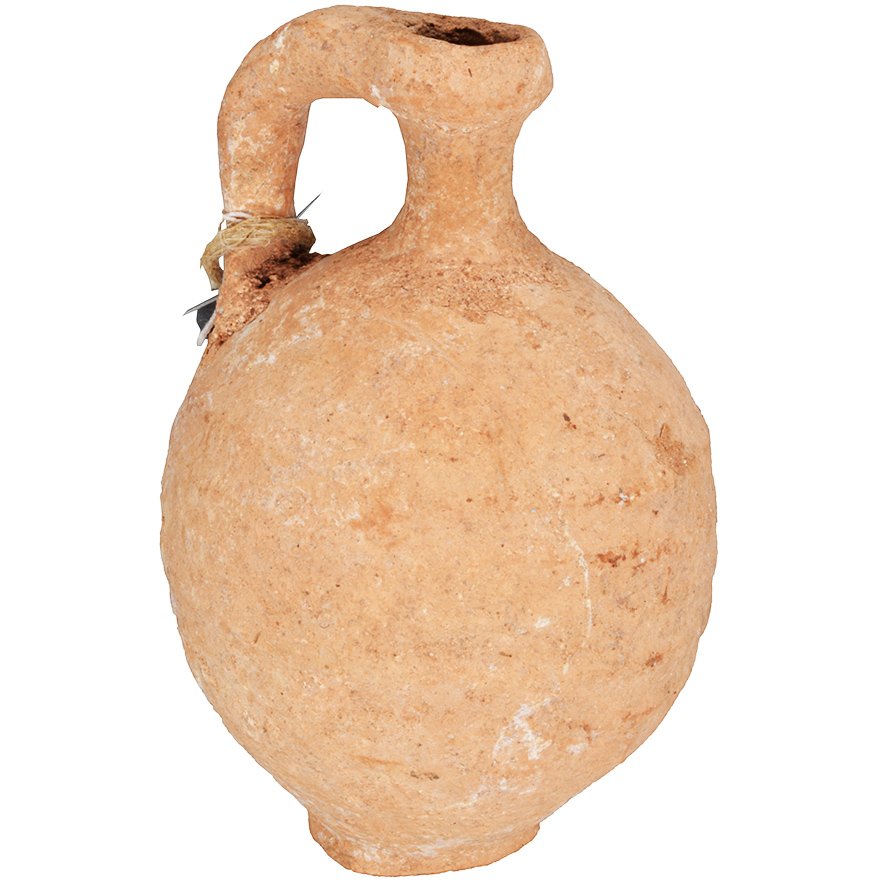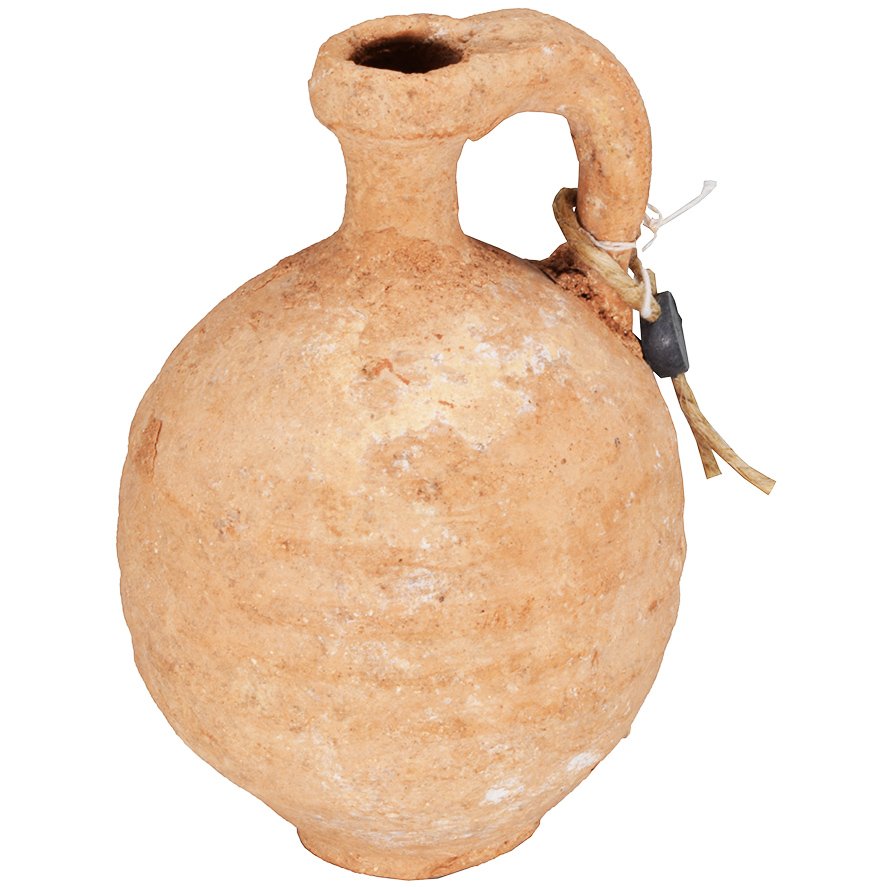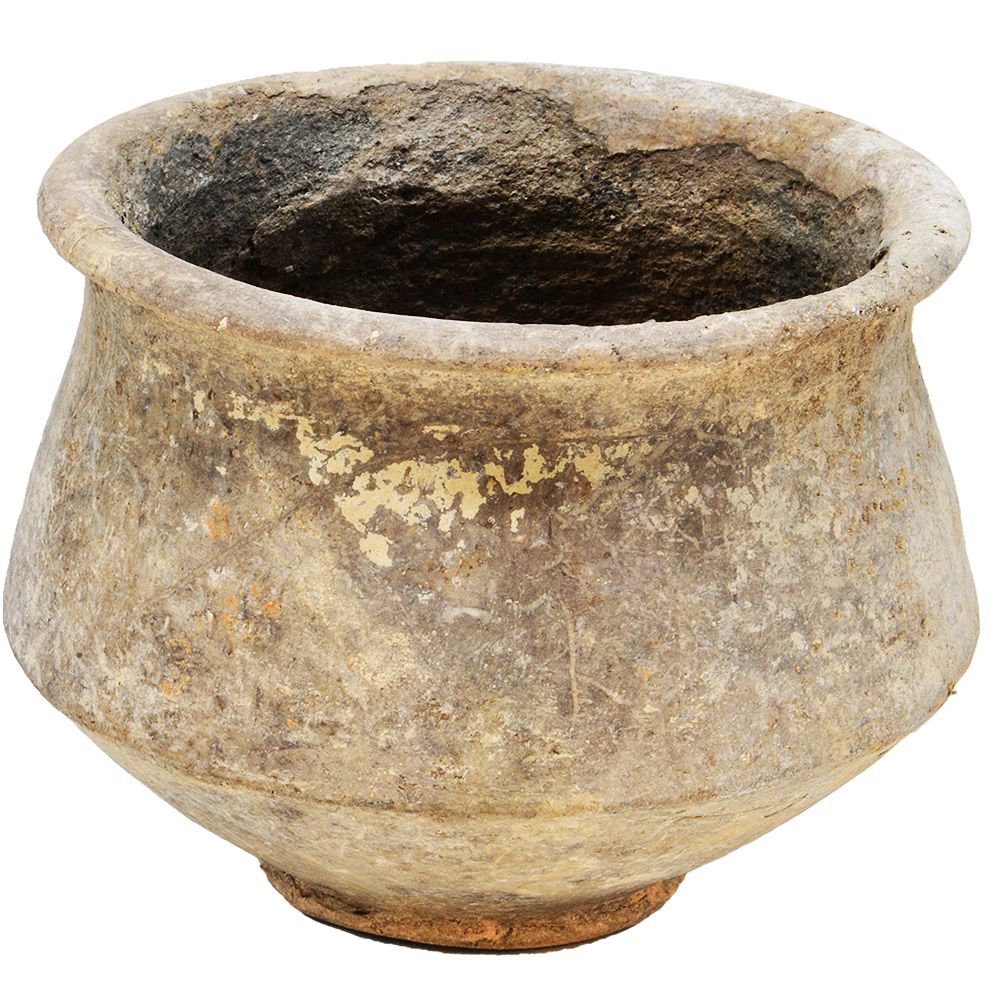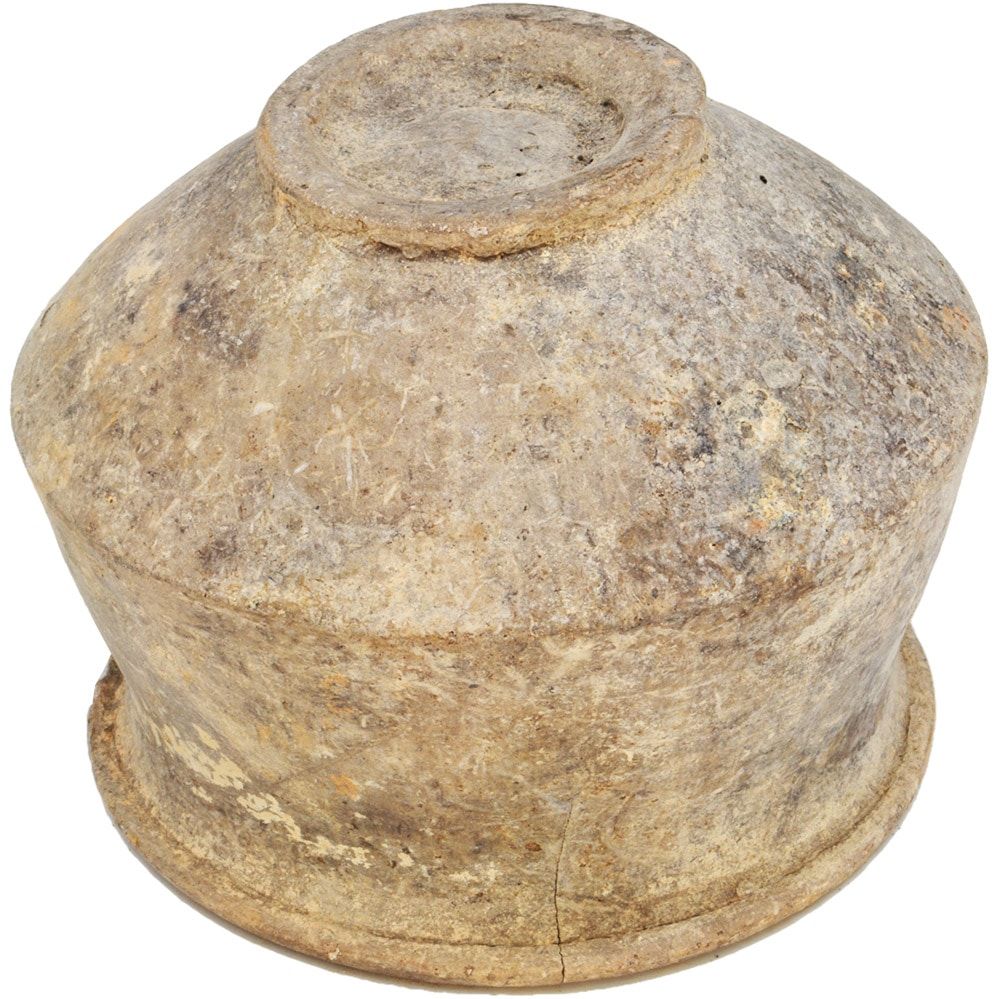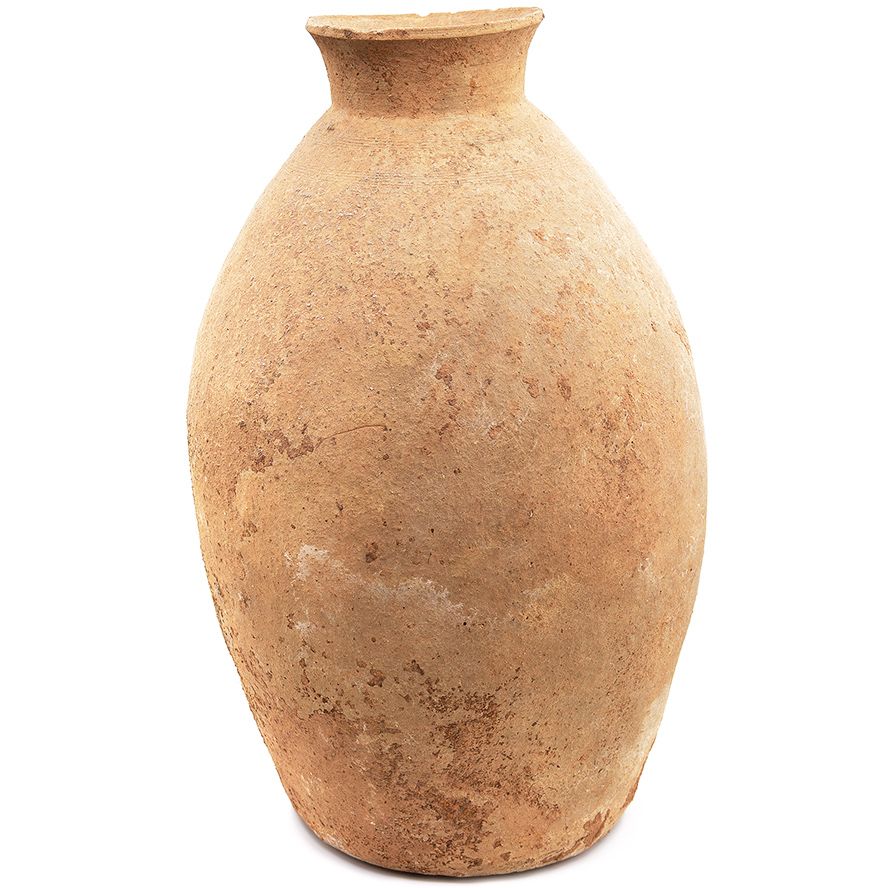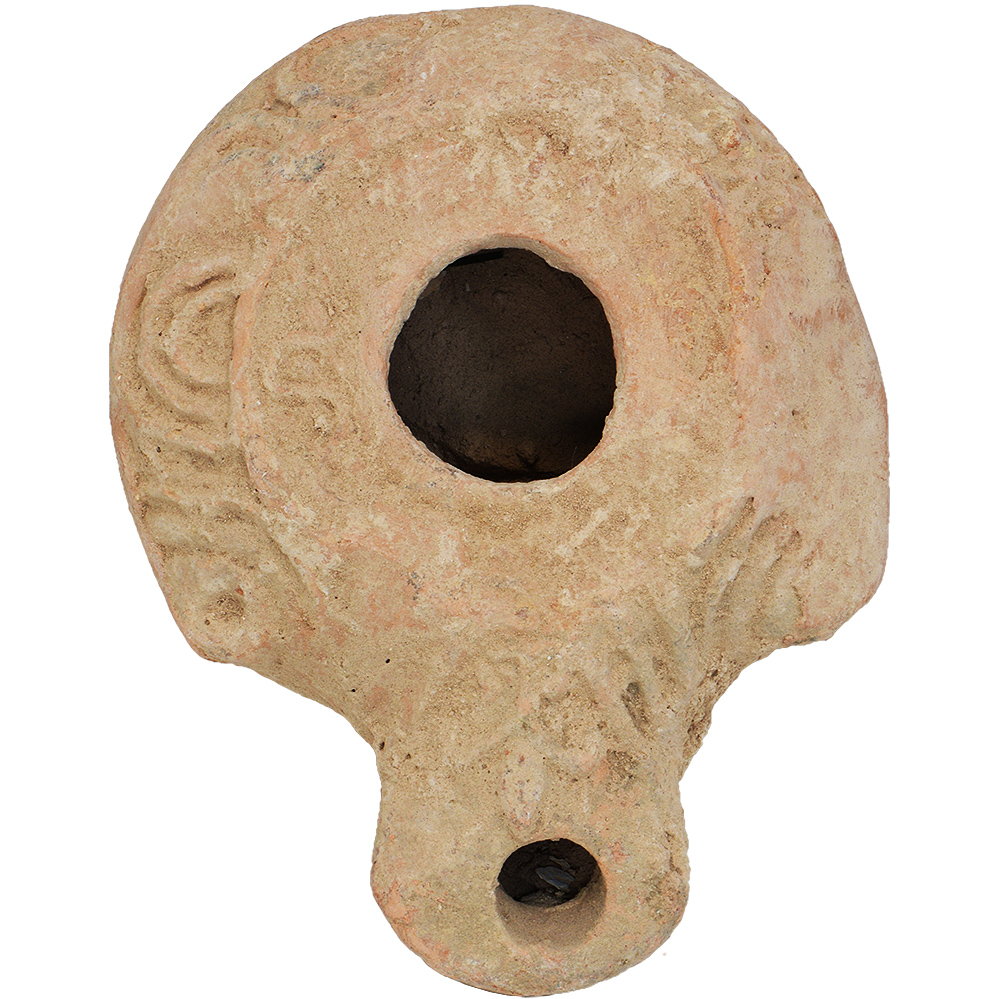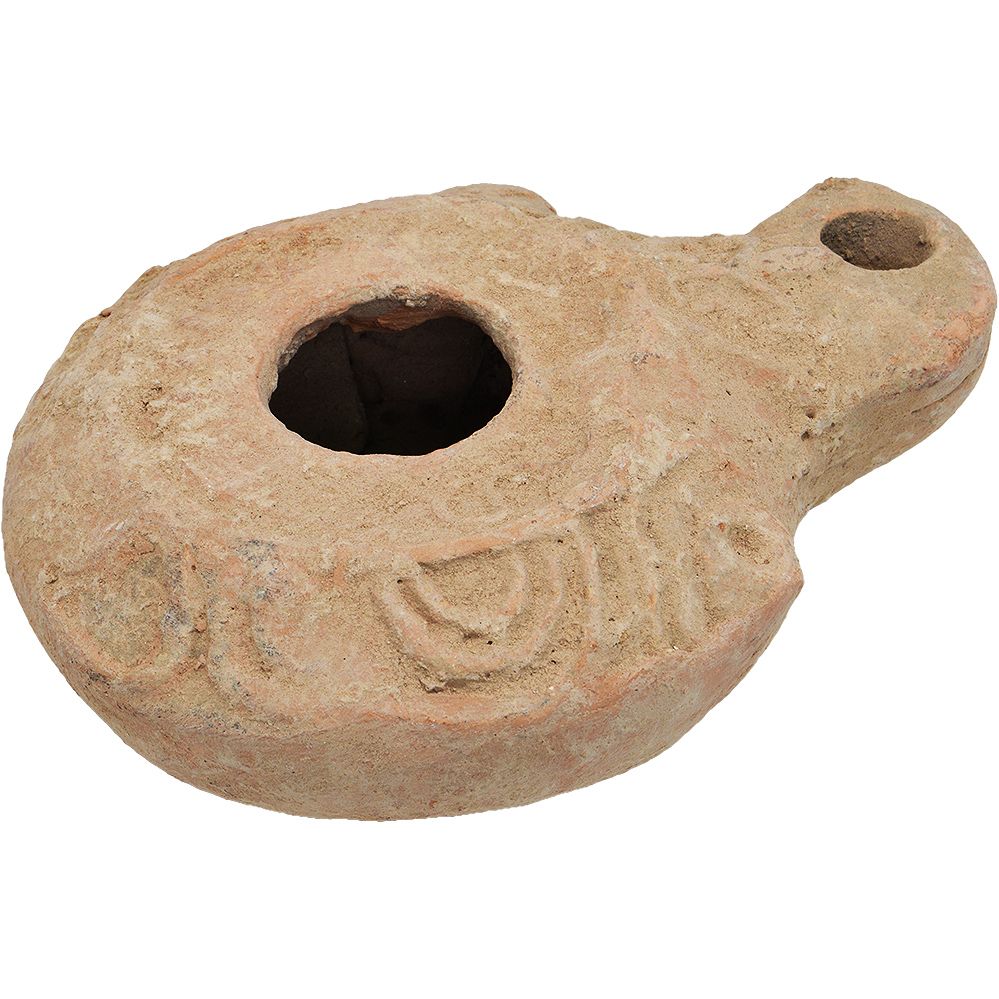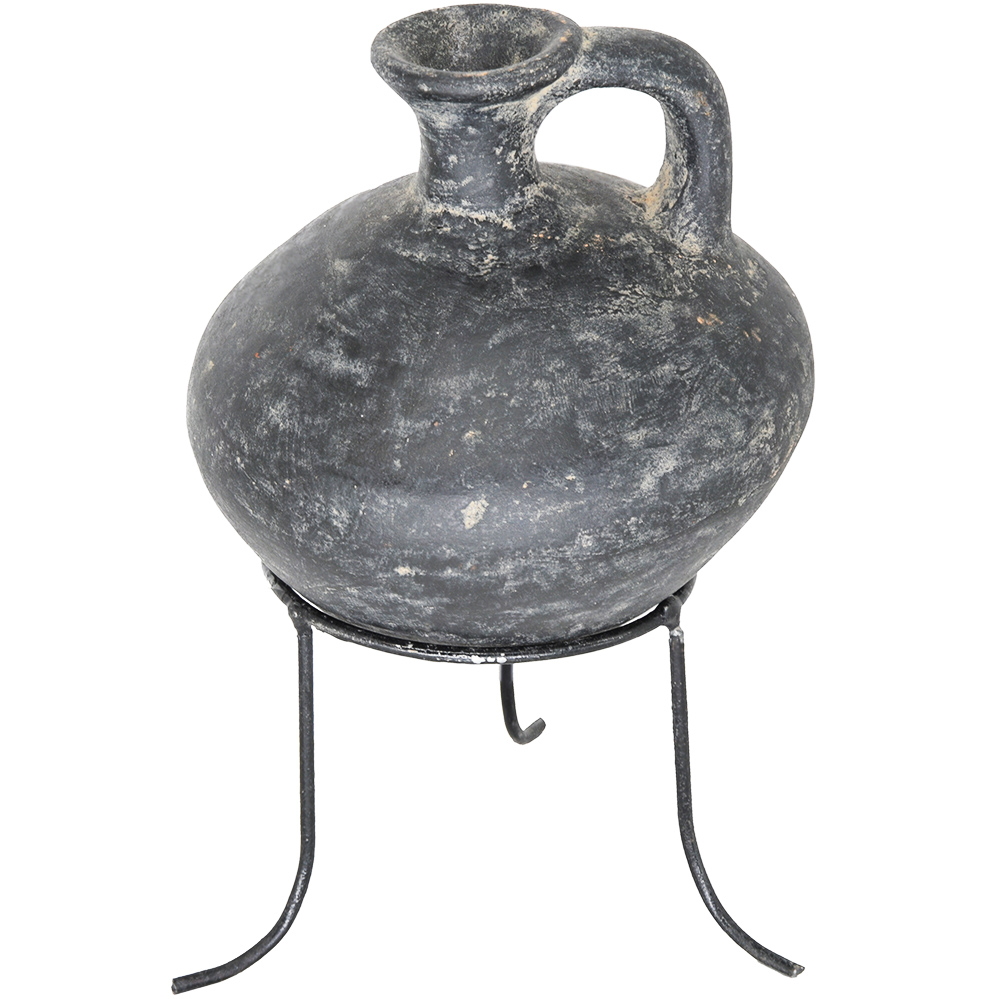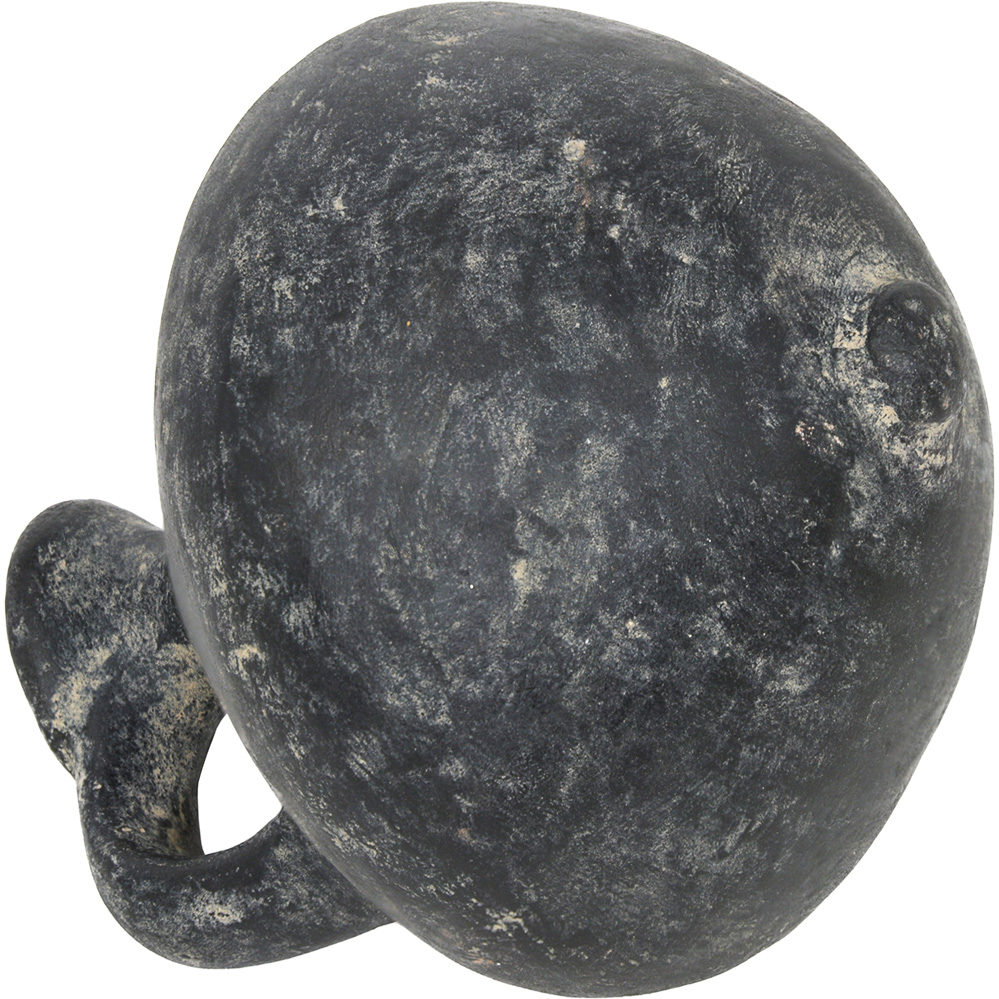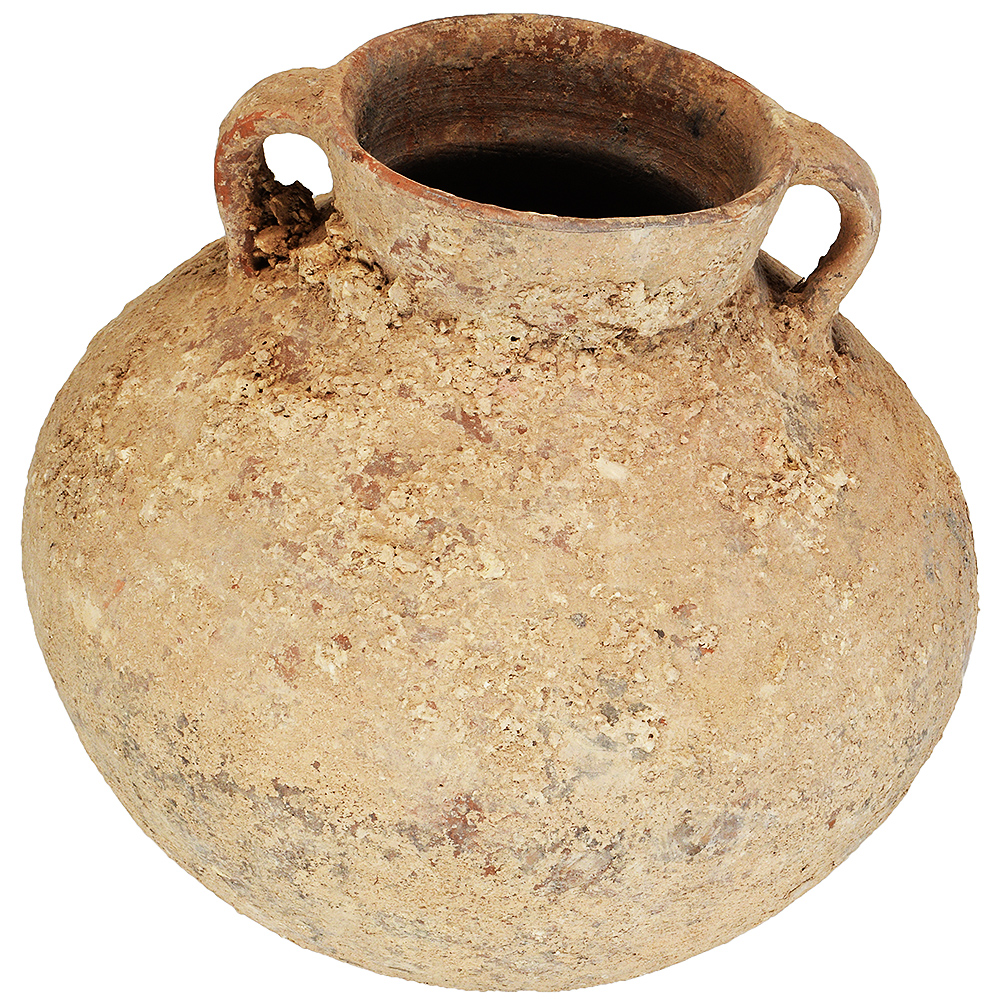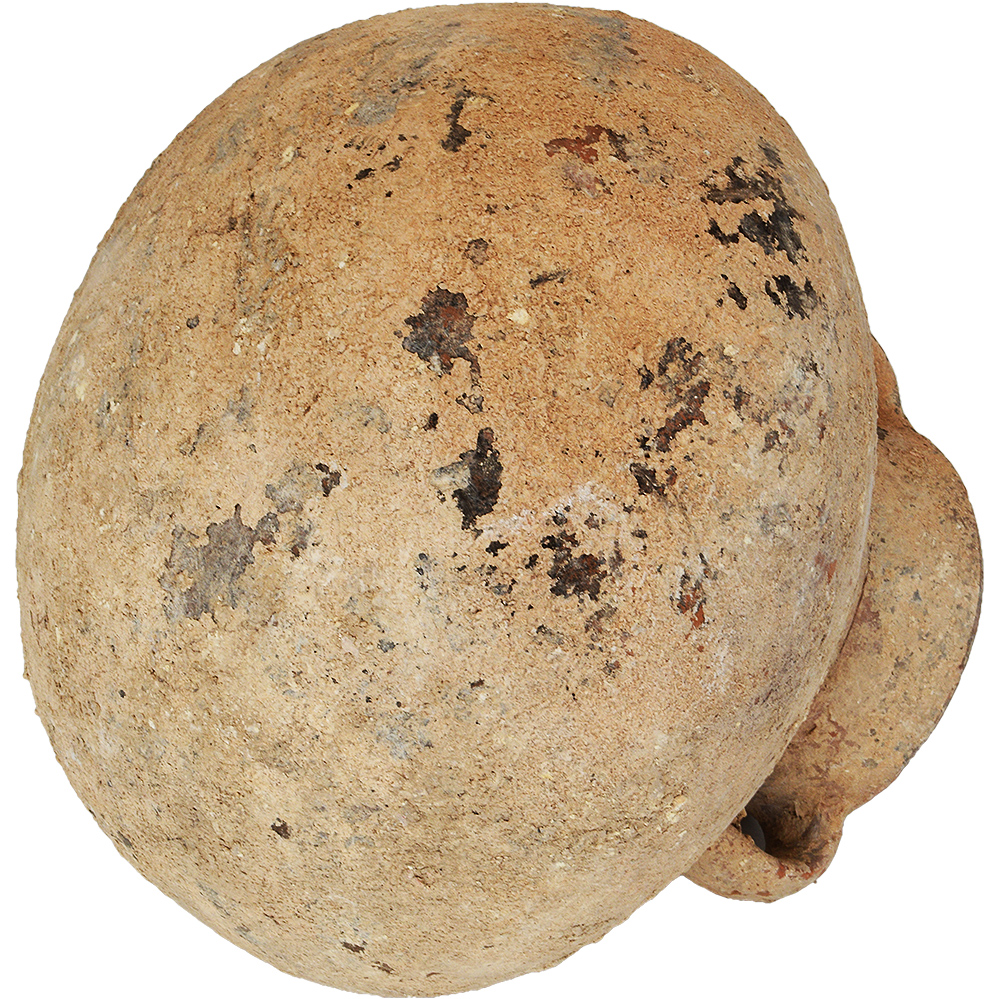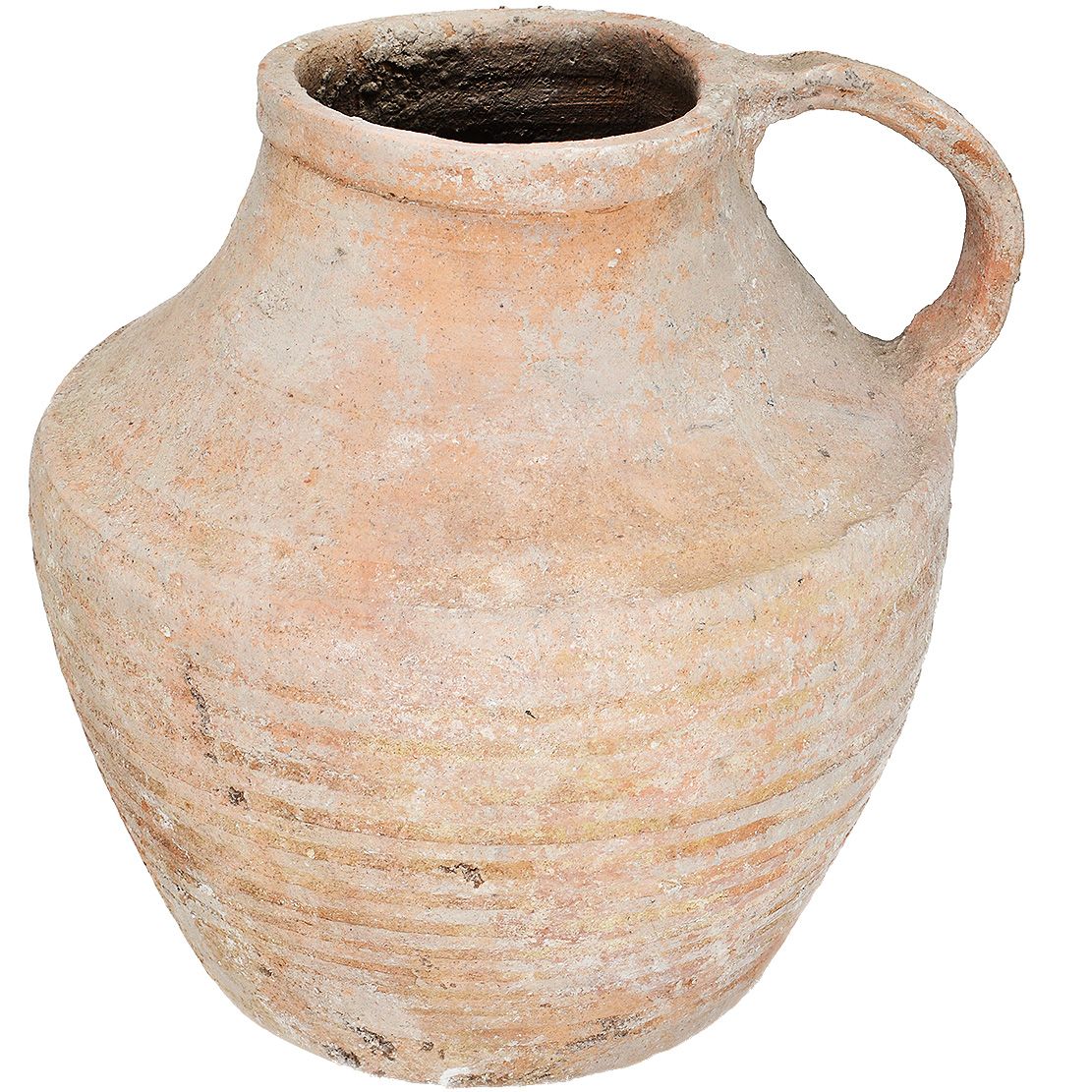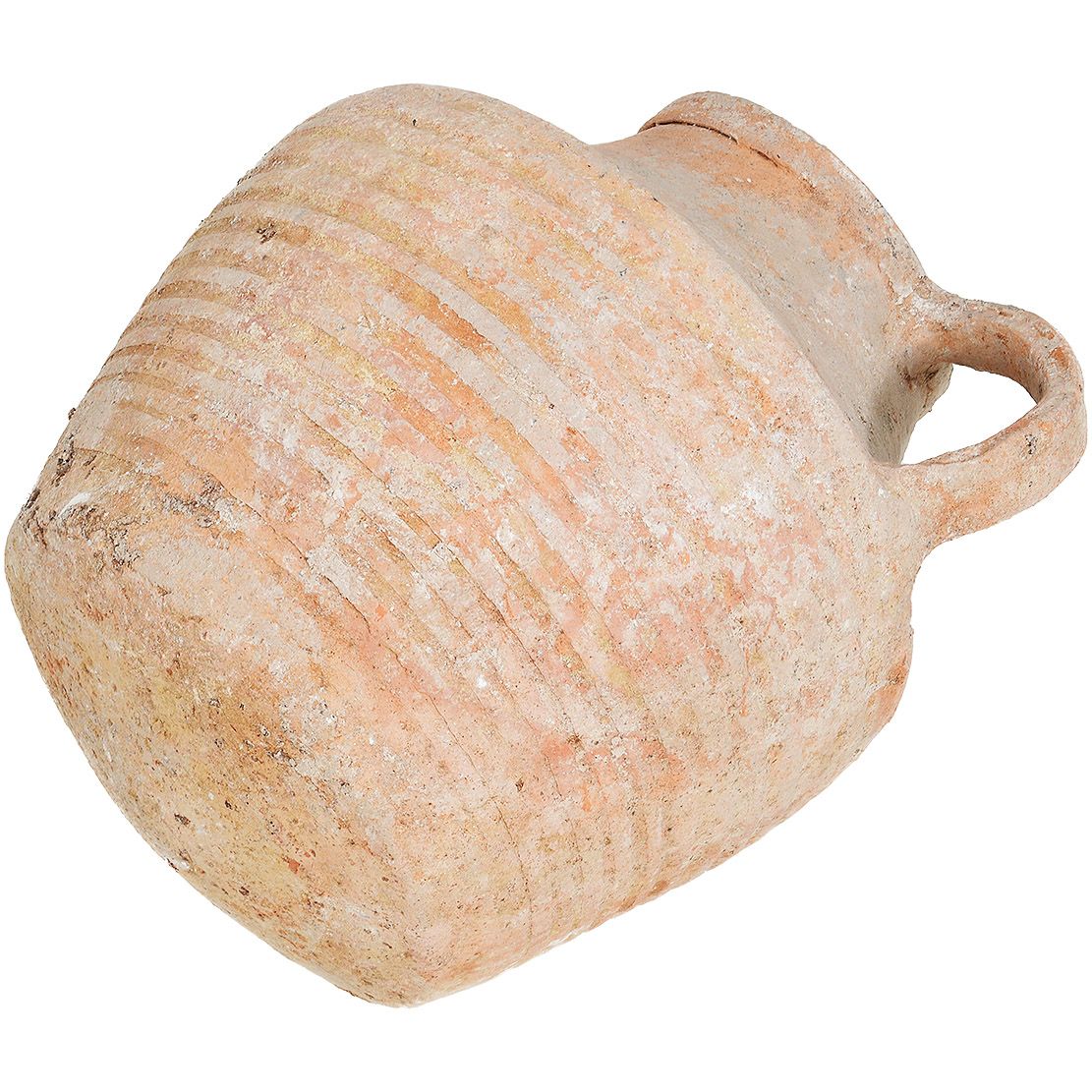Description
This set of a jug and a bowl is dated to the 1st Century BC- 1st Century AD.
This set of ancient pottery is an example of the everyday vessels of the people of Judea in the time of Jesus and the days of the Second Temple, preserved in excellent condition.
This period is known as the “Early Roman Period”, which began with the conquests of the Roman general Pompeius Magnus in 63 BC. This period, to which these vessels date were made at the time of Jesus Christ and King Herod the great. In addition, important historical events in the history of the Holy Land occurred during this period, such as the great revolt against the Romans and the destruction of the Second Temple in Jerusalem in 70 AD.
The two vessels presented in this set are part of the everyday vessels of the people who lived in the Holy Land during the lifetime of Jesus, in the first century AD. The pottery jar in the set began to appear in the archeological record as early as the Hasmonean period, and continued to be used in various forms until the Byzantine period. Its shape is simple, and it has a handle that goes down from the rim to the shoulder.
But we have this treasure in earthen vessels, that the excellence of the power may be of God and not of us.
(2 Corinthians 4:7)
Jars of this type were part of the serving of meals that took place in the Roman period and in the days of Jesus in the Holy Land. Presumably, the vessel contained drinking water at these meals.
As for the clay bowl, it was also part of the everyday utensils used in meals. Its shape is simple and modest, and earth marks are still noticeable on the inside. Interesting evidence is that such bowls were found in the common dining room of the Essene sect in Qumran, on the shores of the Dead Sea. This find links this bowl to the Early Roman period, and to one of its important historical characteristics- the sects of the late Second Temple period and the desire for a life of simplicity in the Judean desert.


